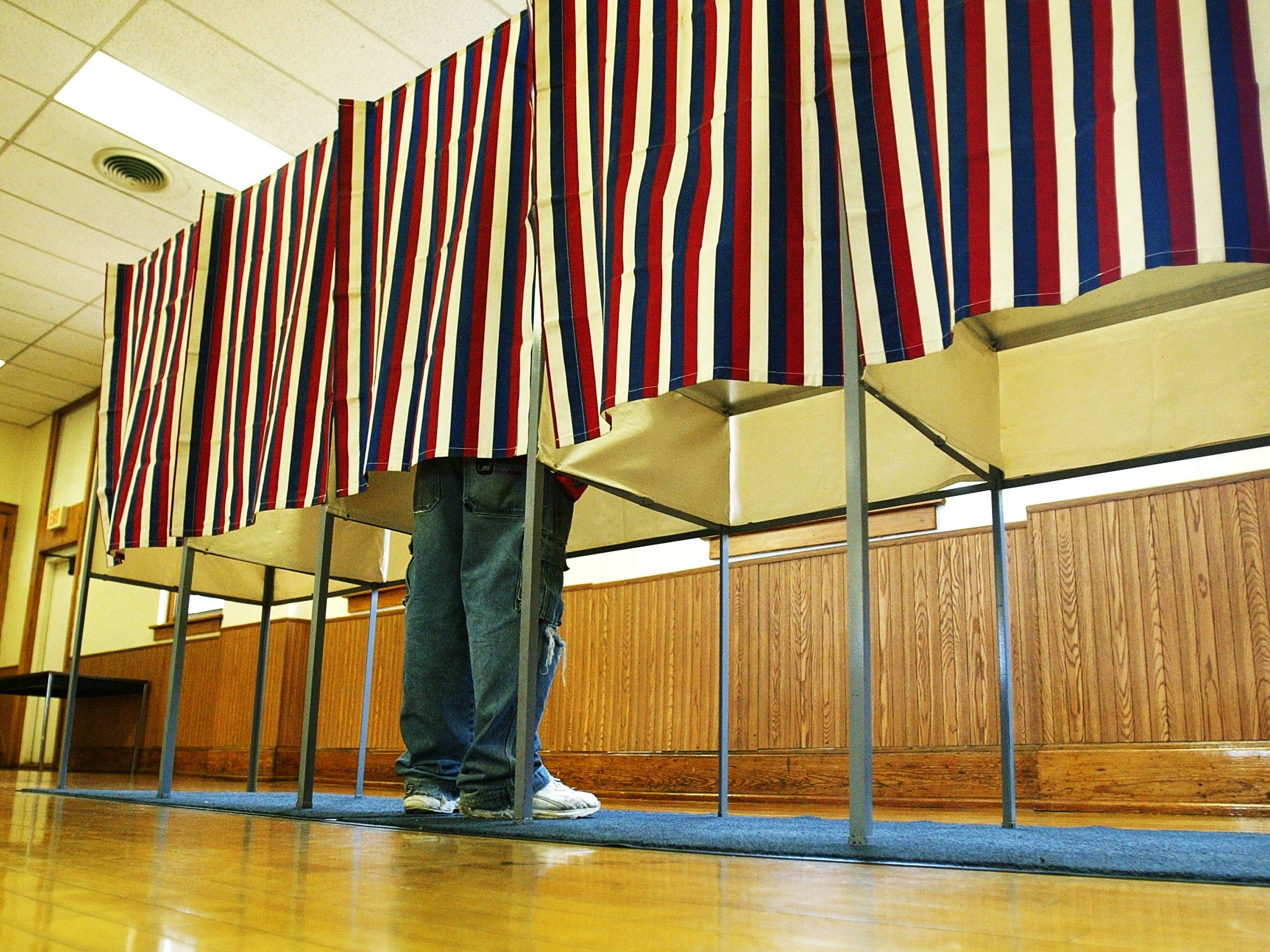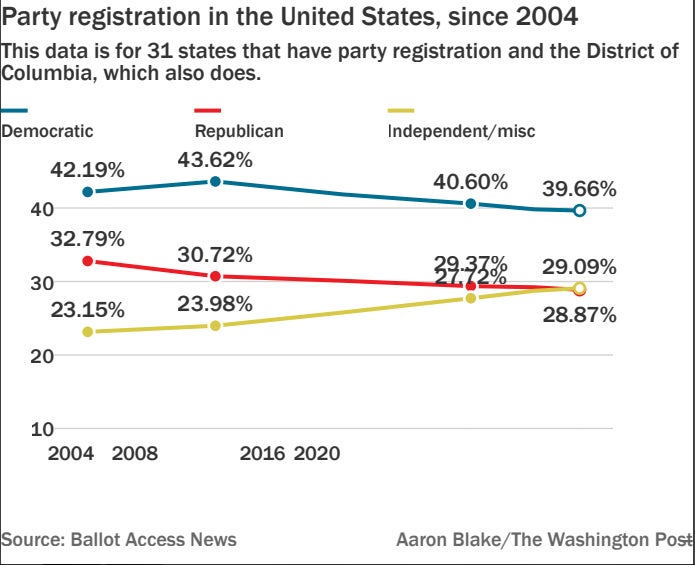Republicans outnumbered by Independents for first time in US history
But voters registered as Democrat still outnumber both

Your support helps us to tell the story
From reproductive rights to climate change to Big Tech, The Independent is on the ground when the story is developing. Whether it's investigating the financials of Elon Musk's pro-Trump PAC or producing our latest documentary, 'The A Word', which shines a light on the American women fighting for reproductive rights, we know how important it is to parse out the facts from the messaging.
At such a critical moment in US history, we need reporters on the ground. Your donation allows us to keep sending journalists to speak to both sides of the story.
The Independent is trusted by Americans across the entire political spectrum. And unlike many other quality news outlets, we choose not to lock Americans out of our reporting and analysis with paywalls. We believe quality journalism should be available to everyone, paid for by those who can afford it.
Your support makes all the difference.Republicans outnumbered by Independents for first time in US history. But it may not be for the reason you think, though.
New data from Ballot Access News, which tracks registrations in the 31 states that require voters to register by party, show that Independents now account for 29.09 per cent of voters in them, compared to 28.87 per cent for Republicans. As recently as 2004, Republicans outpaced Independents by nearly 10 percentage points.
There are still way more registered Democrats; 39.66 per cent are registered with that party.
This marks the first time since party registration began in the early 1900s that the number of registered Independents in the United States has surpassed either major political party, according to Ballot Access News.
But before anybody chalks this up as having to do with the current occupant of the White House, it’s worth parsing the trends.
While Independents have surpassed Republicans, there actually hasn’t been a huge drop in Republican Grand Old Party (GOP) registration since Donald Trump took office. Since October 2016, GOP registration has dropped by half a percentage point. Democrats have actually declined by nearly a full point over the same span. Independents have benefited from both drops.
And they have been doing so for years. Democrats are more than three points off their peak this century, which was in 2008 when Barack Obama was about to become president. At the time, 43.62 per cent of voters were registered Democrats.
Republicans are also more than three points off where they were four years earlier, in 2004, when 32.79 per cent of voters were Republicans and George W Bush won re-election.

Since 2008, the trendline for each party has been relatively steady. But while Democratic registrations fell more between 2016 and 2018 (0.78 per cent) than Republicans (0.15 per cent), Republicans have fallen more since 2018. Since Democrats won back the House of Representatives in that midterm, their registration numbers have declined by just 0.16 per cent, compared to 0.37 percent for Republicans.
These numbers, it bears emphasising, aren’t the full picture and differ from surveys of party registration. While national pollsters like Gallup ask samples of Americans to self-identify which party they align with, these numbers represent actual party registrations, and they only account for the 31 states that actually have party registration. When you ask people in all 50 states to self-identify, Independents do significantly better, and Democrats do significantly worse; the most recent Gallup data show 42 percent of people identify as Independents, and more identify as Republican than Democrat, 30 percent to 27 percent.
Indeed, part of the reason we still have many more actual registered Democrats is that some Southern and Appalachian states still feature more registered Democrats than Republicans, even though those states have been voting reliably Republican at nearly every level of government for years and years. Louisiana, for example, has more than 300,000 more registered Democrats (1,216,000) than registered Republicans (905,000). Blue states are also more likely to have party registration than red states.
On the whole, both surveys of all 50 states and the new party registration data from Ballot Access News indicate Trump’s presidency hasn’t fundamentally shifted the future of party registration in the United States in any major way. That said, this is a milestone worth marking.
The Washington Post
Join our commenting forum
Join thought-provoking conversations, follow other Independent readers and see their replies
Comments